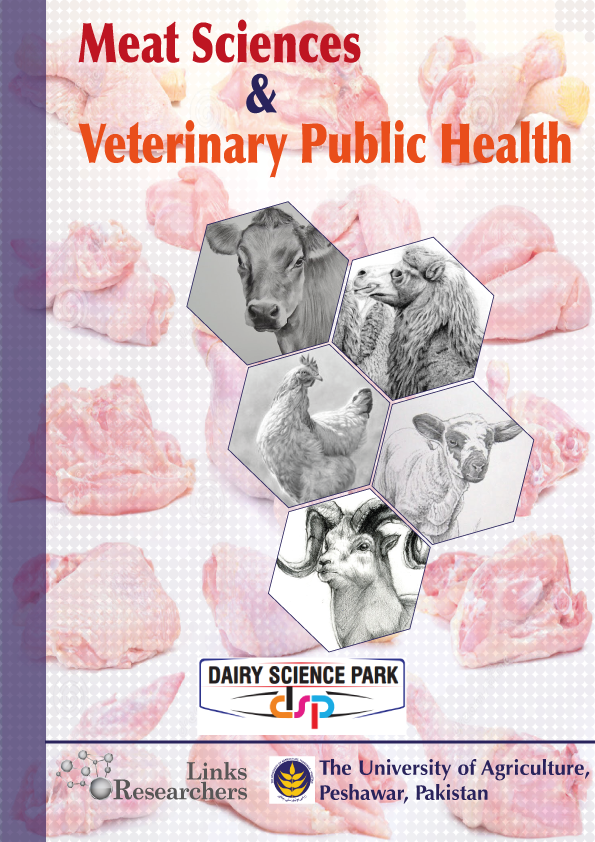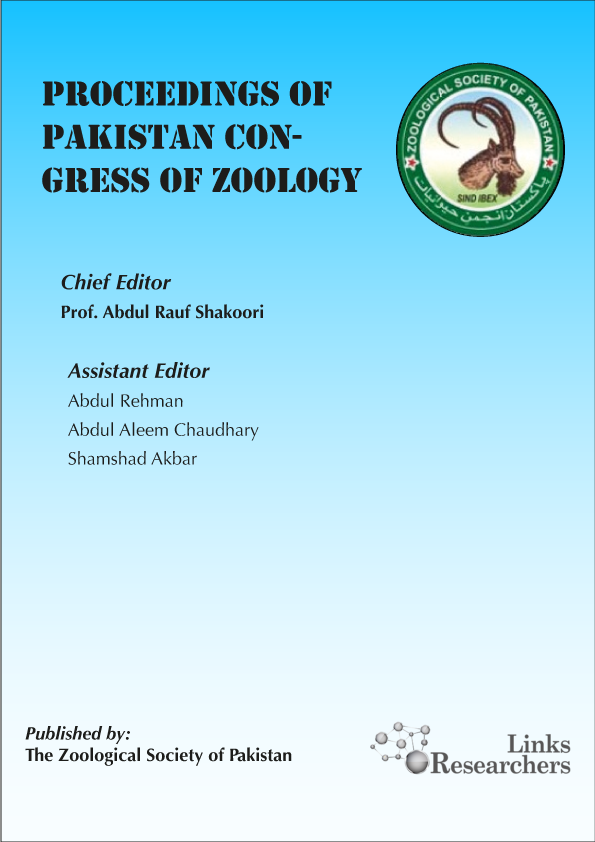Zafar Khan, Asad Sultan, Rajwali Khan, Sarzamin Khan, Imranullah and Kamran Farid
Abdul Wajid Khalil and Zafar Iqbal
Soraya Khosravian Dehordi*, Abdolnaser Mohebbi and Kahin Shahanipour
Muhammad Naeem Khan* and Asad Jan
Hafiz Abdullah Shakir1*, Javed Iqbal Qazi2, Abdul Shakoor Chaudhry2, Muhammad Irfan3, Muhammad Khan1, Shaukat Ali4 and Saima Shahzad Mirza5
Korkmaz Bellitürk1, Zubair Aslam2, Ali Ahmad2* and Sami ur Rehman2
Amir Naveed1, Unsia Habib1, Fouzia Parveen2, Syed Naveed Ul Hasan1, Muddasar Habib1, Irfan Shah1
Hina Imtiaz1*, Salma Khalid2, Kashaf Riaz1, Muhammad Arshad Ullah3 and Zubair Rehman4
Safia Bibi1, Saima Naz1*, Saba Saeed1, Ahmad Manan Mustafa Chatha2
Moazama Batool1*, Sajid Abdullah2, Huma Naz3, Mubashar Hussain4, Sadia Maalik1, Sajida Mushtaq1, Tanveer Ahmed5 and Laiba Shafique6
Sajid Abdullah1*, Huma Naz2*, Zunera Abbas1, Uzma Nazir1, Mehrunisa Basharat1, Tanveer Ahmed3, Adnan Ahmad Qazi2
Khaliq Dad1, Muhammad Nawaz2*, Muhamamd Ibrahim3, Fengliang Zhao4, Rumsha Hassan2, Humaira Nawaz5, Muhammad Usman Saleem6, Kinat Javed2, Ayesha Komal2 and Hajra Naz2
Noha M. El-Shabrawy1, Atef M. Kamel2, Aza S. Goda1, Gehad R. Donia1, Ahmed M. Salah-Eldein2*
Samia Azad1, Iram Liaqat1*, Riffat Iqbal1 and Uzma Rafi2
Noor Muhammad Khan1,2, Tariq Mahmood Khalil1,3*, Rashid Rehan2 and Iftikhar Zeb4
Hasnain Raza1*, Tanveer-ul-Haq1, Muhammad Imran1, Nabeel Ahmad Ikram2 and Muhammad Bilal Shoukat1
Lulu Ding, Ke Wang, Ruxue Huang, Wenjing Yu, Bingzhao Yan, Mengli Jiang and Jicang Wang*
Chen Zhao, Lulu Ding, Ying Ye, Congying Kou, Haoran Xiao, Jing Zhu and Jicang Wang*
Hafsa Saeed, Soumble Zulfiqar, Abeedha Tu-Allah Khan and Abdul Rauf Shakoori*
Milena Vlahovic*, Dragana Matic, Marija Mrdakovic, Larisa Ilijin, Anja Grcic, Aleksandra Filipovic, Jelica Lazarevic and Vesna Peric-Mataruga
Roheela Yasmeen1,3* , Faheem Hafeez1 , Umme Ammara1 , Rubab Younas1 , Sibtain Ahmad2 , Zulfiqar Ali3, Zaheer Ahmad Nasir4
Moazama Batool1*, Saima Naz2*, Ghulam Abbas3, Ahmad Manan Mustafa Chatha4, Mamoona Mahmood1, Asma Aziz1 and Fatima Yasmin2
Moazama Batool1*, Saima Naz2*, Sheeza Bano1, Sadia Nazir3, Ghulam Abbas4, Ahmad Manan Mustafa Chatha5, Maria Lateef2 and Fatima Yasmin2
Zaryab Murad1*, Sobia Bibi1, Shehr e Yar Ahmad1, Mohsin Ali Khan1, Rimsha Sadaf2, Mauz ul Haq1, Umair Manan1 and Muhammad Younas2
MUJIBUR RAHMAN1, MUHAMMAD AYAZ KHAN1*, WISAL SHAH1 & ALIA NAZ1
ASADULLAH KHAN1, MUHAMMAD AYAZ KHAN1, ALIA NAZ1, ABDULLAH KHAN1 & NAUREEN AURANGZEB1
ZAFAR IQBAL KHAN1, KAFEEL AHMAD1, HAREEM SAFDAR1, KINZA WAJID1, HUMAYUN BASHIR1, KHALID NAWAZ2, MAHPARA SHEHZADI3, IJAZ RASOOL NOORKA4, MUDASRA MUNIR1, IFRASALEEM MALIK1, ASMA ASHFAQ1, HIRA MUQADDAS5, HAFSA MEMOONA6, MADIHA SANA6, NAUNAIN MEHMOOD7, SAIF UR REHMAN8 & TASAWAR ABBAS8
Sumaira Fiaz1*, Huma Naz1*, Tanveer Ahmed2*, Iqra Zulfiqar1, Khalid Mehmood1, Muhammad Jabbar1, Syed Qaswar Ali Shah1, Muhammad Usman4
Bingzhao Yan1, Guiping Chen2, Lulu Ding1, Ruxue Huang1, Wenjing Yu1 and Jicang Wang1*
Mariam Ismail Ali1*, Rania Helmi Abdou1, Mary Ayad Sargious2, Omnia Mohamed Khattab2, Kawthar Abdelwahed Elhady1
Hina Jabeen*, Usman Irshad, Kainat Azhar, Alisha Fatima, Asma Zaheer Abbasi, Tayyaba Sadia and Jaweria Aqeel
Featuring
-
Addition of Some Marine Ostracoda and Diplostraca from Pakistan (Northern Arabian Sea) and Restudy of Ctenopod Penilia avirostris and Cyprinid Cypridina dentata
Quddusi B. Kazmi and M.A. Kazmi
Proceedings of Pakistan Congress of Zoology, Vol. 42, pp 75-85, 2024
-
Molecular Analysis of the Two-Component CusS/CusR Regulon for Copper Resistance: Cloning, Phylogenetics, and Structural Modeling
Soumble Zulfiqar and Abdul Rauf Shakoori
Proceedings of Pakistan Congress of Zoology, Vol. 42, pp 65-74, 2024
-
Seasonal Prevalence and Impact of Environmental Variables in Emergence of Aedes Mosquito in Multan, Pakistan
Faheem Ali and Amjad Farooq
Proceedings of Pakistan Congress of Zoology, Vol. 42, pp 59-64, 2024
-
Bioaccumulation of Heavy Metals in Freshwater and Marine Fish Species of Pakistan
Hina Jabeen, Usman Irshad, Kainat Azhar, Alisha Fatima, Asma Zaheer Abbasi, Tayyaba Sadia and Jaweria Aqeel
Proceedings of Pakistan Congress of Zoology, Vol. 42, pp 51-57, 2024
Subscribe Today
Receive free updates on new articles, opportunities and benefits

© 2024 ResearchersLinks. All rights Reserved. ResearchersLinks is a member of CrossRef, CrossMark, iThenticate.












